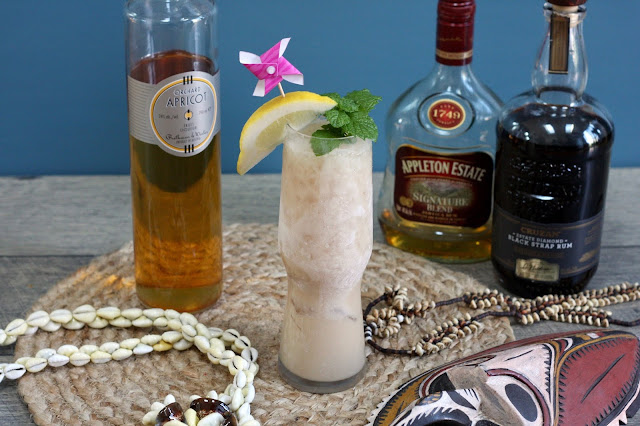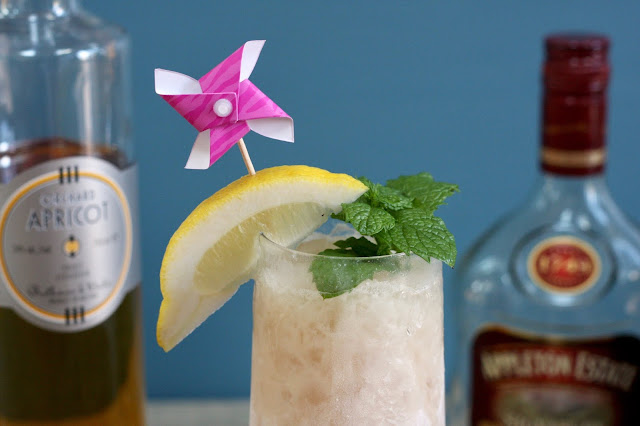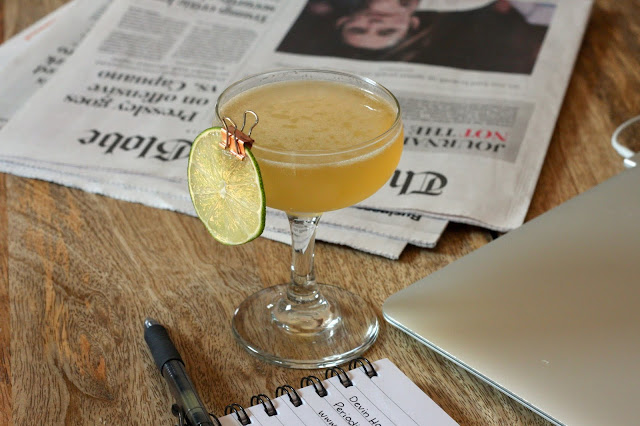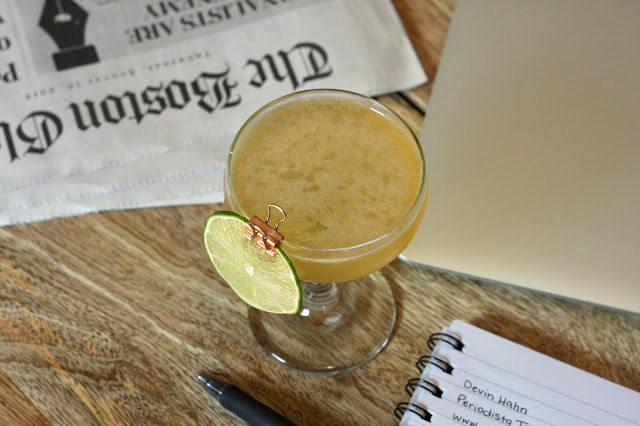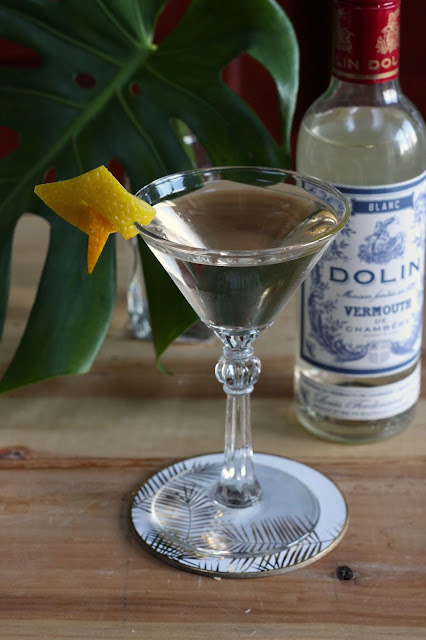Apricot liqueur may seem a bit specific or obscure if you've only got limited space in your bar, but it's an ingredient that comes up surprisingly often. It appears in a number of recipes from the early 1900's, and in a lot of rum cocktails and Tiki drinks. Like many ingredients we've discussed, the quality and availability of apricot liqueur declined along with the popularity of the craft cocktail during the mid to late 20th century. But now it's back, and there are tons of classic and new recipes to make with it.
I knew apricot liqueur would be a good buy because I've already made - and loved - several recipes that called for a small amount of it. Not having a bottle, I subbed in a bit of apricot preserves, which really did work pretty well. But for more apricot-centric drinks like the Periodista and the Tradewinds (below), you need the real thing. And now I can go back and make those other drinks right.
Apricot liqueur is often referred to as apricot brandy. The two terms are frequently used interchangeably, but I think certain aspects of how the liqueurs are made may prevent the word "brandy" from appearing on the label - likely the addition of fruit and sugars after distillation, although I'm not sure. The quality apricot liqueurs are essentially fruit brandies or eaux-de-vie - spirits distilled from fruit other than grapes, in this case apricots.
One of the easiest bottles of apricot liqueur to find, and the one that seems to be recommended the most often in my cocktail recipe books, is Rothman & Winter, which is imported from Austria by Haus Alpenz. It's made from Klosterneuberger apricots grown in the Danube Valley. Two of the other most popular varieties, Giffard and Marie Brizard, are made in France.
Rothman & Winter Apricot Liqueur
Price: $25Alcohol Content: 24%
Popular Cocktails: Tradewinds, Periodista, Golden Gun, Flor de Jerez, Charles Lindbergh, Hotel Nacional
It's been a while since I made a genuine Tiki drink, but after a couple of recent trips to Tiki Rock in Boston, I was itching to make one at home. I love drinks with coconut creme - Tiki Rock had a Painkiller that was really amazing - and the Tradewinds had been on my list of drinks to make once I finally got my hands on some apricot liqueur. It's an undeniably tasty cocktail, creamy and tart. The traditional garnish is a lemon wedge speared on an inside-out cocktail umbrella (as if the wind has blown it that way), but I thought a mini pinwheel was appropriate.
History: According to Martin Cate in Smuggler's Cove, the Tradewinds originated in the Caribbean in the 1970's. The recipe appeared in Beachbum Berry Remixed.
Tradewinds
1 oz. black blended rum (Cruzan)1 oz. blended lightly aged rum (Appleton Estate Signature Blend)
1 oz. apricot liqueur (Rothman & Winter)
1 1/2 oz. coconut cream
1 oz. lemon juice
Combine all ingredients in a shaker with 12 oz. crushed ice and a 4 large "agitator" cubes. Shake or flash blend and then open pour into a zombie or pilsner glass. Garnish with a lemon wedge speared on an inside-out umbrella, or a little pinwheel. I added some mint as well.
Recipe adapted from Smuggler's Cove.

